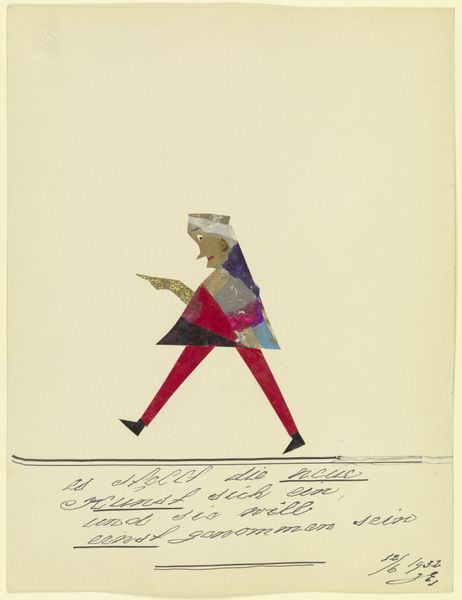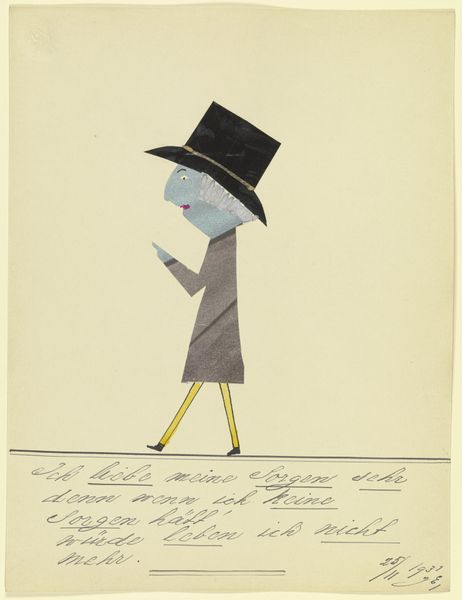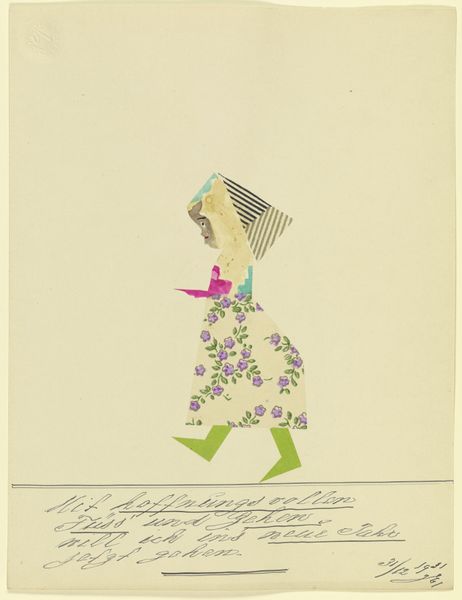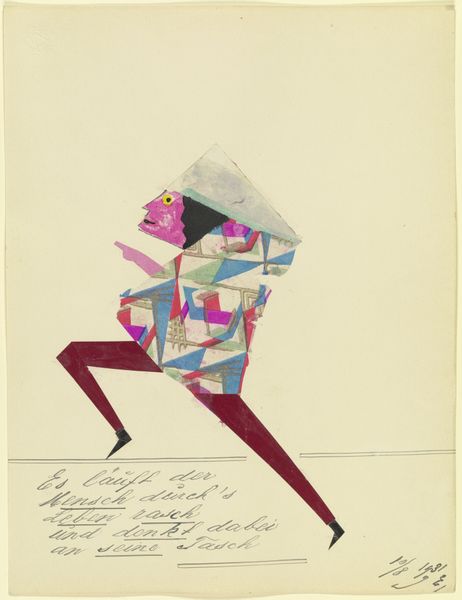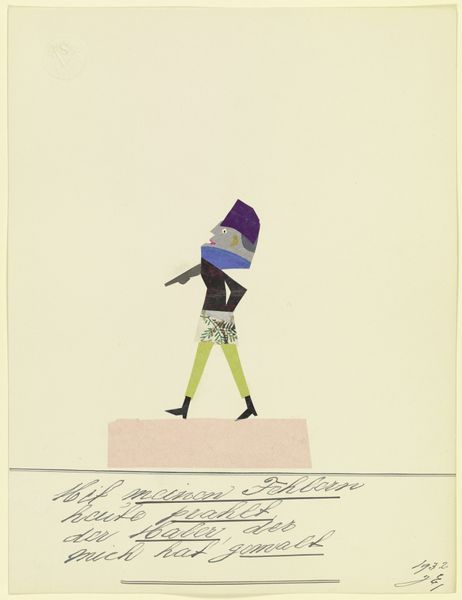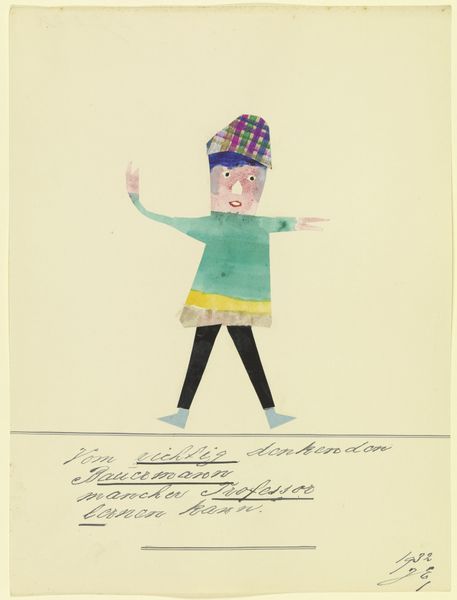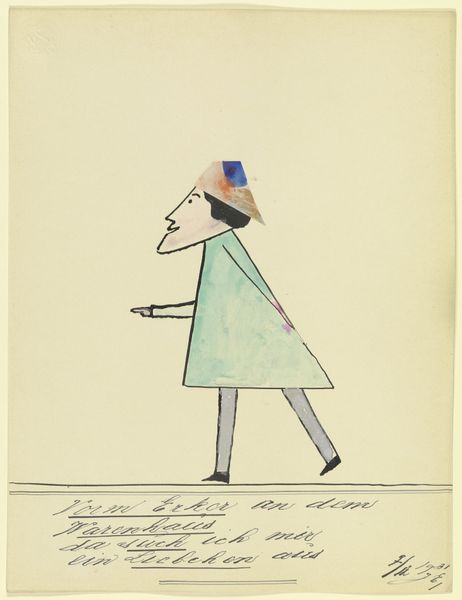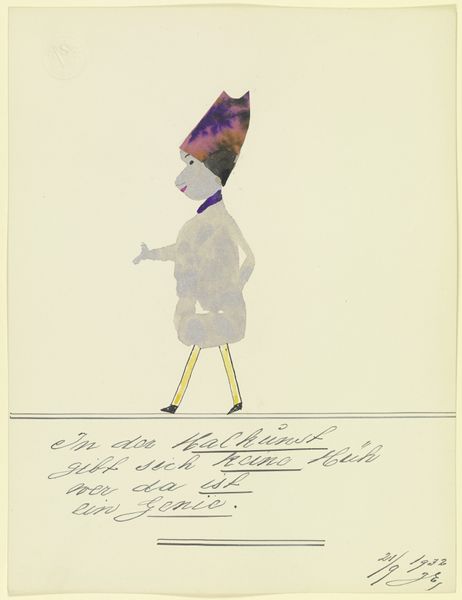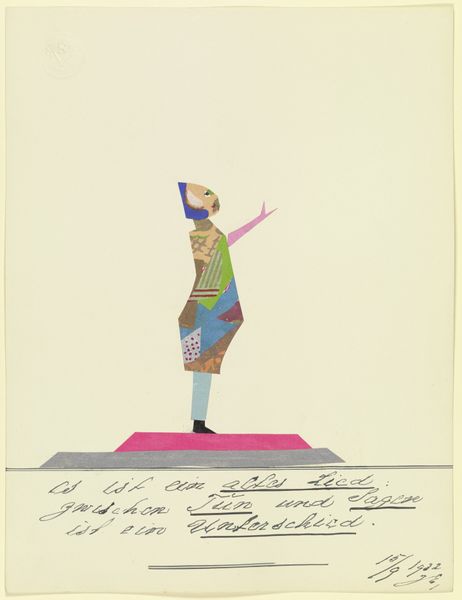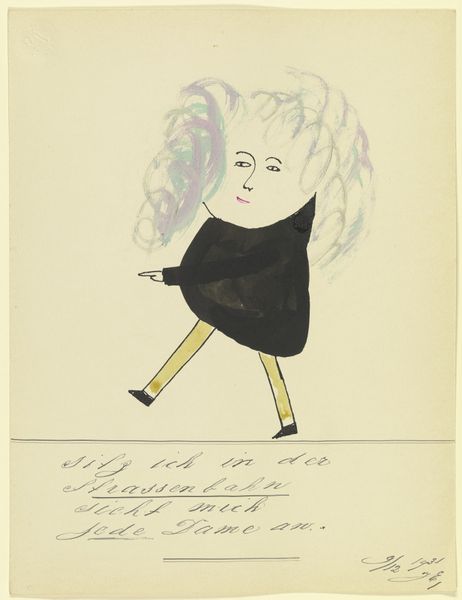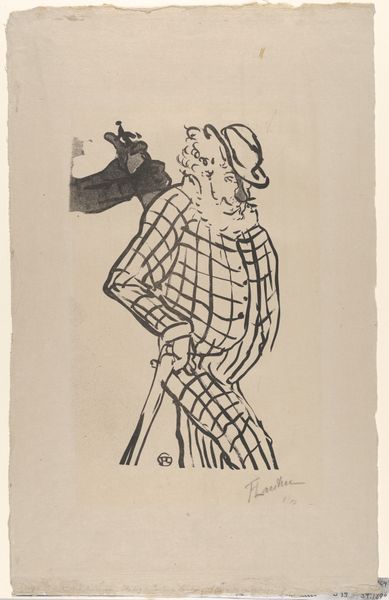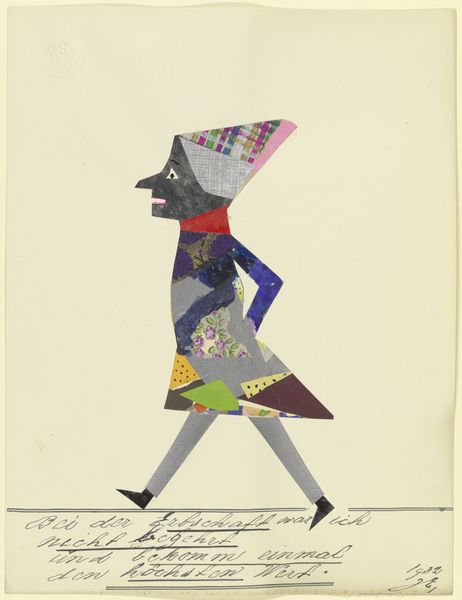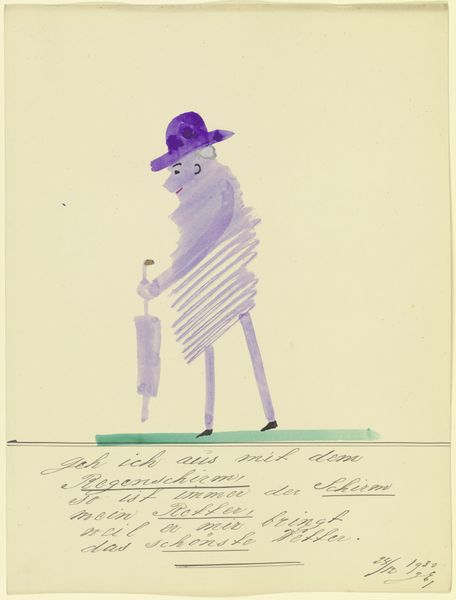
Copyright: Public Domain
Curator: Look at this intriguing artwork by John Elsas from 1931, titled "14020 („Sein Onkel in Amerika …“)." It's a gouache, ink, and collage piece on paper. What is your immediate take on it? Editor: Striking. It’s quite jarring with the flat planes and disproportionate features – the red hat especially seems a forced imposition onto the form. It elicits a feeling of awkwardness. Curator: Indeed. Notice how the artist uses the medium to play with perspective. The layering creates texture, yet the overall composition flattens the figure, pushing it to the forefront as almost a graphic symbol, not a person. Consider the tension created by juxtaposing the cartoonish character with the handwritten text at the bottom, a caption seemingly cut out from a larger narrative. Editor: It evokes an era of uncertainty. Given the time, one can infer how economic hardship and shifts in political ideologies informed not only the artist's sensibility but also the possible reception of such a satirical work. The Uncle in America trope and implied futility might have been biting commentaries about aspirations dashed and promises unfulfilled during the Depression. Curator: I would not dismiss your historical reading, especially given Elsas was working in Frankfurt during a highly turbulent period, a place rife with artistic exploration that sought to undermine classic bourgeois taste. We must, however, also remember how he emphasizes the flatness of each object used to construct the subject, creating a dialectical relationship of flatness against the dimensionality gouache often achieves. The colors are similarly constrained: dull earthtones accented only by an aggressive red that seems completely divorced from its subject. Editor: Yes, the garish hat really punctuates the critique. This piece seems like an intersection of Dada and the New Objectivity where one is directly confronted with the banality of modern existence; but also a sardonic indictment of societal structures. Elsas used the portrait not only as a means to expose the aesthetic, but the socio-economic realities permeating life in 1930s Germany. Curator: Precisely. It demonstrates Elsas' sharp ability to render commentary on both surface and content. Editor: This certainly allows us to see beyond the art object into the larger tapestry of historical consciousness.
Comments
No comments
Be the first to comment and join the conversation on the ultimate creative platform.
